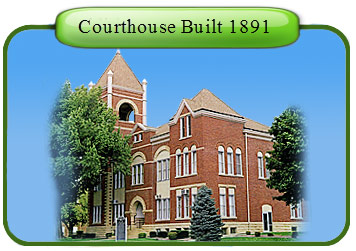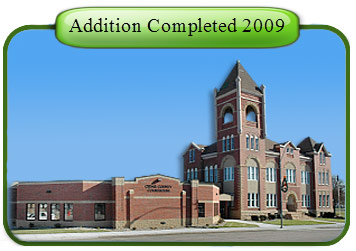The Cedar County Courthouse was originally built back in 1891. The new courthouse (or an addition to the old courthouse depending how you look at it) was ready for staff to move in back in July, 2009. Below are images showing the before and after.


According to historians, three communities in Cedar County can claim a distant link to British royalty. As the story goes, Coleridge was named after Lord Coleridge, Randolph was named in honor of Lord Randolph Churchill, and the county seat of Hartington received its name as a tribute to Lord Hartington. All three Britons had visited the United States about the time the town sites were being established.
The history of this area in Northeast Nebraska can be traced back to the 1650s when the Omaha Indians lived along the Bow Creek area. For the next 90 years this area that borders the Missouri River on the north was home to the Omaha, Ponca and Sioux tribes. An occasional trapper or trader would pass through the area, but it was in 1804 with the exploration of Meriwether Lewis and William Clark that the area was first made known to the white man.
The Kansas-Nebraska Act of 1854 opened the territory to white settlers for the first time. Three years later Cedar County was organized by an act of the Territorial Legislature. The boundaries of the county, which was named as such because of the number of cedar trees that were growing in the area, were redefined in 1860 to their present dimensions.
Cedar County has had three county seats. The first was located in Old St. James, where a two-story frame courthouse was constructed. In 1858 the settlement of St. Helena, along the Missouri River, was established. Three years later, through an election, the county seat was moved to this settlement and would remain there until 1885. In the meantime, the townsite of Hartington was growing and in 1885 it was declared the county seat following an election. That same year bonds were approved for the construction of a courthouse. The decision to move the seat of local government to Hartington was made primarily because its central location was more accessible to the growing number of county residents.
Once covered by prairies grass, the county today is known for its farming and livestock production.

